XXXX Hospital




This presentation has been prepared exclusively for the benefit and internal use of the qualified, sophisticated global financier to whom it is directly addressed and delivered. This presentation is for discussion purposes only and is incomplete without reference to, and should be viewed solely in conjunction with, the oral briefing provided by XXXX Hospital. Neither this presentation nor any of its contents may be used for any other purpose without the prior written consent of XXXX Hospital.
The information in this presentation is based on forecasted numbers provided in industry literature and our best estimates. These projections and estimations reflect prevailing conditions and our views as of this date, all of which are accordingly subject to change.
In preparing this presentation, we have relied upon and assumed, without independent verification, the accuracy and completeness of all information available from public and private sources which were provided to us, or which were otherwise reviewed by us. In addition, our analysis does not claim to be an appraisal of the assets or the valuation of any entity. Apple Bottom Storage LLC makes no representations as to the actual benefits which may be received in connection with a transaction, nor the legal, tax, or accounting effects of consummating a transaction.
A number of statements referenced in this presentation that have been granted are forward-looking statements, and any statements that express or involve discussion with respect to predictions, expectations, beliefs, plans, projections, objectives and goals, assumptions of future events, or performance are not statements of historical fact and may be “forward-looking statements”.
Forward-looking statements are based on expectations, estimates, and projections at the time the statements are made that involve a number of risks and uncertainties that could cause actual results or events to differ materially from those presently anticipated. Forward-looking statements in this presentation may be identified through the use of words such as “expects”, “will”, “anticipates”, “estimates”, and “believes”, or statements indicating certain actions “may”, “could” or “might” occur.
Any person or entity seeking to make an investment in the company should not rely on the information set forth in this business plan as complete. There exists substantial information with respect to the company, its business, and its future prospects which is not set forth in the business plan and there exists a substantial number of risks associated with an investment in the company which are not set forth in this business plan.
Any person or entity considering making an investment in the company must ensure that they avail themselves of all information relating to the company, its business, and its financial projections, as well as all other information deemed necessary or desirable by the prospective investor, prior to any such investor making an investment in the company.
Any prospective investors shall be required to represent to the company that, prior to making a said investment, they have received from the company all information deemed necessary or desirable by them with respect to said investment and that said investor did not rely on any information set forth in this business plan in making any such investment.
By accepting delivery of this plan, the recipient agrees to return this copy to the corporation at the address,
Do not copy, fax, reproduce, or distribute without written permission from XXXX Hospital.

This business plan is developed to obtain investment capital of $8,000,000 to open and operate XXXX Hospital.
It consists of thorough market research to develop a business that will be of immense value to both the economy and the business owner.
This business plan reflects on how the investment translates into a profitable enterprise that helps to generate employment.
The potential of this business is highlighted through the macro market research findings presented herein. The Hospital industry has reported significant growth and good margins during the past few years and is expected to maintain this growth in the future.
The financial forecast is based on securing investment capital which will be used for the initial setup costs and working capital needs. Net margins are stable and growth in customers and revenue is accounted for a bit on the higher side from industry trends since XXXX Hospital is expected to capture good market share.



Revenue in the Health Care market is projected to reach US$621 million in 2023.
Revenue is expected to show an annual growth rate (CAGR 2023-2027) of 18.34%, resulting in a projected market volume of US$1,218 Million by 2027.
The company is registered as XXXX Hospital. Dr XXXX 55%, Mr. XXXX 35%, and Miss XXXX 10% will be the founders of the hospital.
✓ Hospital Name: XXXX Hospital
✓ Location: XXXX
✓ Geographical Focus: Southern Africa
✓ Management: Dr. XXXX, Mr. XXXX and Miss XXXX.
✓ Target Customers: Patients, Insurance companies, WHO etc.
Mission:
To provide the quality of care we would want for ourselves, our families, and our friends.
Vision:
To improve the health and well-being of the people we serve.
Goals:
✓ Pursuing the journey of becoming a High-Reliability Organization.
✓ Continually improving and building pride in the overall experience at our hospital.
✓ Leveraging current and emerging technology to deliver more efficient and effective patient and family-centric care.
✓ Hire experienced staff and retain them.
✓ Creating employment opportunities as the business grows.
✓ Contributing to the growing Zimbabwe market for the Hospital industry.
✓ Adding to the national exchequer by paying taxes.
✓ Continuously improving the industry by bringing in technological changes and innovative techniques.
The Management
Dr XXXX the CEO of the hospital has more than 16 years experience in the Health Care industry. Having a Ph.D. and an MBA makes him a leader in running a hospital efficiently and effectively. He also has the ability to develop a relationship with outside organizations, including the medical community, referring physicians, and the media.

Hospitals play an integral part in society by providing essential medical care and services to the population worldwide. They are the foundation of the healthcare system and are essential for preserving the well-being and safety of individuals by offering a range of services to the community, including emergency departments and specialty therapists. Several factors such as growing demand for specialized care, increasing focus on patient-centered care, and the emergence of medical tourism are driving the market during the forecast period. Additionally, rapid population growth, rising prevalence of chronic diseases, and increased awareness of health and wellness also add to the market growth. The Global Hospital Market size was valued at USD 4,823.61 billion in 2023 which is expected to reach USD 7,926.81 billion in 2030 with a CAGR of 6.41% for the forecast period between 2024 and 2030.
The need for healthcare services is also driven by an aging population, especially in wealthy nations. The demand for hospitals and medical institutions to care for elderly people with chronic diseases has increased due to longer life expectancies. Governments and private individuals are spending more on healthcare, which is fueling the hospital market’s expansion. Cutting-edge diagnostic tools, surgical equipment, and therapeutic innovations have not only improved patient outcomes but have also expanded the scope of services that hospitals can offer. This attracts patients seeking state-of-the-art treatments and procedures, further driving the market growth.
The worldwide hospital market is expanding as a result of improvements in patient outcomes, cost savings, and increased productivity owing to the advancements in medical technology. Healthcare professionals reach more patients and deliver higherquality treatment because of innovations in telemedicine, robotic surgery, artificial intelligence, and wearable technology. These technologies will become more crucial to the future of healthcare as they develop further. Access to treatment for those living in rural or underserved regions is improved via telemedicine, which enables patients to communicate with medical professionals remotely.
For instance, the University of Mississippi Medical Center employs telemedicine to treat stroke victims in the state’s outlying regions. Similarly, Israel’s Sheba Medical Center has implemented an AIbased predictive analytics system that analyses electronic health records, patient data, and genetic information to identify individuals at high risk of developing complications.

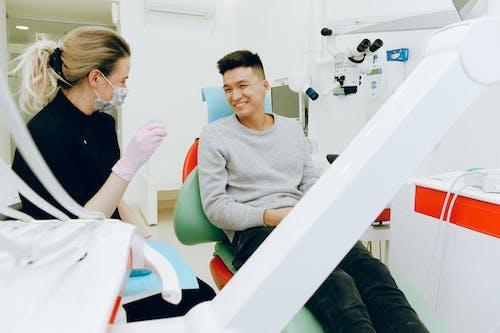
Favorable healthcare policies, technological developments, a growing number of specialty hospitals, and inbound medical tourism are the major factors behind the largest market share in North America for hospitals. According to American Hospital Association (AHA), the United States alone has more than 6,100 hospitals out of which 3,400 are urban community hospitals. More than 1,50,000 people visit the United States every year to receive some form of treatment.
On the other hand, Asia-Pacific will be the fastest growing region for the hospitals market for the period under study owing to improvements in the healthcare system, the region’s aging population, and improvements in technology. There are more than 25,000 hospitals in China (60% public and 40% private).
Several countries are known for their strong healthcare systems and government support for hospital facilities. They invest in infrastructure development, provide funding and subsidies, and implement policies that aim to improve healthcare access and quality. For instance, Norway spends 10.1% of its GDP on healthcare, making it one of the world’s highest healthcare spenders. This totals USD 43 billion, or USD 7,900 per inhabitant in 2021.
Approximately half of the medical equipment is sold to Norway’s public hospital trusts, which account for 94% of all hospital stays. Similarly, in India, the Ministry of AYUSH has implemented a Centrally Sponsored Scheme of the National AYUSH Mission to provide cost-effective AYUSH Services by upgrading AYUSH Hospitals, Dispensaries, and AYUSH Educational Institutions, as well as establishing new AYUSH hospitals and teaching institutions and operationalizing 12,500 AYUSH Health & Wellness Centers.
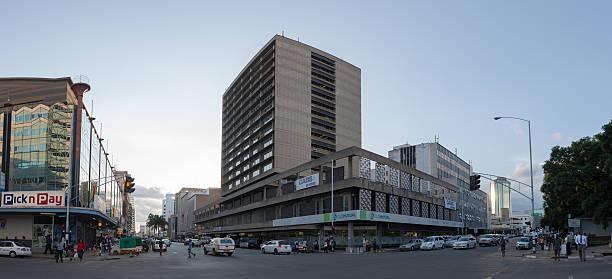
The growing emphasis on specialist services is likely to be the primary driver among hospital service providers worldwide. Apollo Hospitals in India has built a network of specialized centers, including Apollo Cancer Institutes, Apollo Heart Institutes, and Apollo Institutes of Orthopedics. To address specific medical disorders, these centers provide comprehensive and specialized care, utilizing innovative technology and recognized professionals. Similarly, Germany is known for its highly specialized hospitals and centers of excellence. One notable example is the Charité - Universitätsmedizin Berlin, one of Europe’s largest university hospitals. Charité is renowned for its specialized departments, including the Charité Comprehensive Cancer Center and Charité Center for Neurology. These specialized centers offer cutting-edge diagnostics, research, and multidisciplinary treatment options, attracting patients from both within Germany and internationally seeking specialized care in their respective fields. Specialty Hospitals is the fastest growing category in North America followed by General hospitals.

Hospitals are implementing telemedicine initiatives, mobile healthcare units, and partnerships with rural clinics to improve access to care for rural populations and address healthcare disparities. In the United States, the Federal Office of Rural Health Policy (FORHP) implements various initiatives to improve access to healthcare services in rural areas. These grants enable hospitals and clinics to establish telemedicine programs, connect with specialists in urban areas, and provide virtual consultations and follow-up care to patients in remote locations. Similarly, India’s Mobile Medical Unit (MMUs) Program is a collaboration of hospitals with community organizations or government agencies with the goal to provide healthcare to people’s homes, particularly in rural, disadvantaged, and underserved areas.

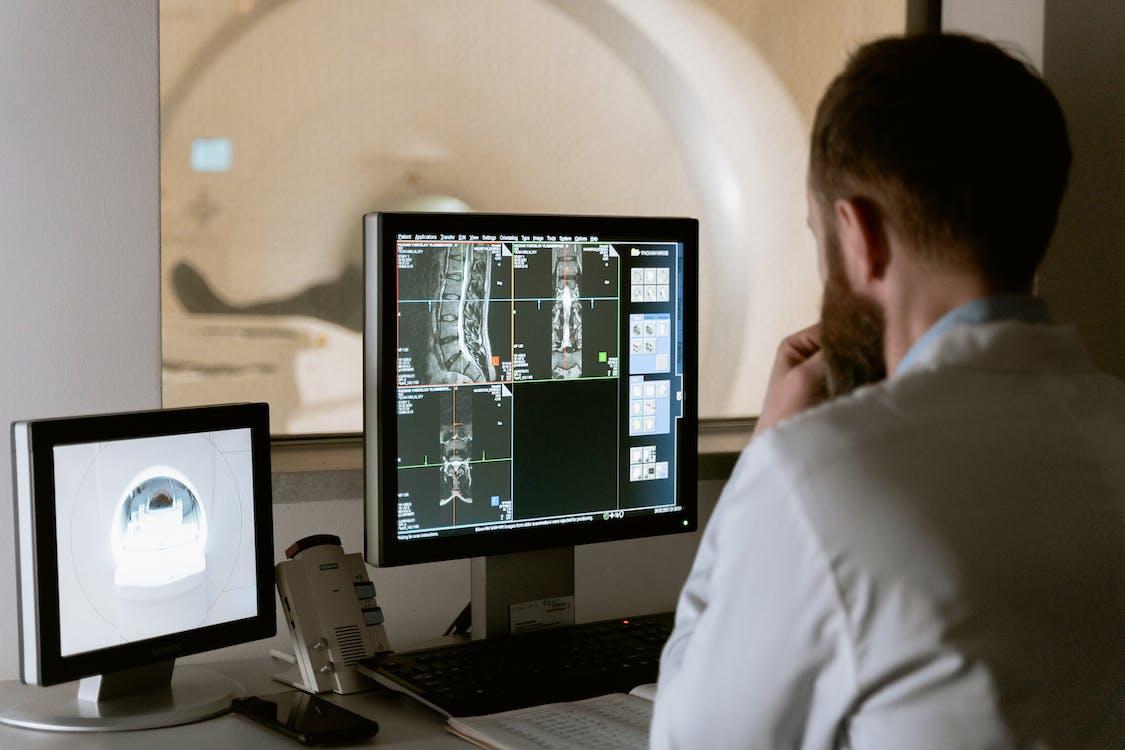
The pandemic has brought about a never-before-seen rise in demand for medical services, particularly in nations with high infection rates. In order to treat COVID-19 patients, hospitals had to expand their capacity, which put a burden on all of their resources, including personnel, machinery, and supplies. While people try to avoid needless in-person trips to hospitals and clinics, the outbreak has also raised demand for telemedicine services.
On the other hand, the outbreak has had a negative impact on the financial viability of hospitals, particularly in nations where private insurance or individual contributions account for the majority of the cost of healthcare. Hospitals’ income has decreased as a result of the pandemic’s impact on elective surgeries and non-COVID-19-related treatments. Hospital finances have also been made more difficult by the rising costs of treating COVID-19 patients, which include the cost of purchasing personal protective equipment (PPE) and recruiting more employees.

The global hospital market is significantly impacted by the ongoing war between Russia and Ukraine. Potential repercussions include the disruption of medical supply chains, an increase in demand for medical services, a decline in investments, an increase in healthcare expenses, and an effect on medical tourism. The intensity of these effects will depend on the scope and duration of the war, emphasizing the necessity for the healthcare sector to be on guard and flexible in response to circumstances.

Hospital Services may be defined as facilities and utilities offered by hospitals in the form of medical and surgical assistance, laboratory and pharmaceutical provisions, staff and specialists, advanced equipment, etc.
In short, hospital services include anything and everything that hospitals offer to their recipients. Most of these depend on the hospital’s motto, customer requirements, and expectations.
Depending on the type of hospital, the services they offer vary. However, every hospital needs to provide some core and mandatory services.
One of the distinguishing factors that mark hospitals unique, with respect to other health facilities, such as clinics and care centers, is that they provide both inpatient and outpatient care provisions.
Every hospital needs to have ward allotment for patients suffering from severe illness and injuries. This enables caregivers to monitor health conditions continuously and thereby, accurate treatment procedures can be opted for.
In Zimbabwe, hospitals provide different types of wards for patients. Some of these are; general wards, private wards, semi-private wards etc. Depending on choice and costs, patients can opt for any type of ward. Modern hospitals are sufficiently equipped to provide huge comfort to patients and are no less, or sometimes better than homes.


Nurses employed by hospitals function as connecting bridges between doctors and the patients they treat. Nurses look after the overall wellbeing of patients. They ensure that all health-related instructions given by doctors are implemented and followed by patients.
Nurses are employed in different departments within hospitals. Specialized hospitals hire trained nurses who are technically sound to perform advanced tasks relevant to the diagnosis, treatment, and care of sick ones.
Every hospital, therefore, has a separate nursing department which forms a core segment of hospitalization.
Every hospital needs to have an OPD (Outpatient Department) as one of the core services rendered. A set of skilled doctors along with technicians must be available, who can assist patients in preliminary diagnosis and related treatments.
Doctors prescribe medicines or diagnostic tests to evaluate patient’s health condition. They are also required to be available for follow up visits to monitor conditions and treatment procedures. Depending on the response, patients are either asked for admission or specialized services such as surgeries.


Intensive Care Unit(ICU):
Almost every hospital in Zimbabwe provides ICU facilities for patients suffering from adverse health conditions. ICUs need to be equipped with modern technical apparatus and skilled professionals who can render the best services. Depending on the type of hospital and services they focus on, there can be different types of ICUs. Some of them are Neuro ICU, Coronary Care Unit, Neonatal ICU, Psychiatric ICU, etc.
Pharmacy and Diagnosis:
Most hospitals in Zimbabwe do maintain a pharmacy and diagnostic department of their own. This is a very important segment as easy and quick availability of medicines and other equipment required for treatment procedures is vital to render the best healing services.
However, many times, hospitals do not guarantee the availability of all medicines that are being prescribed and therefore independent pharmacies are equally important. Further, 9 out of 10 hospitals maintain a separate laboratory and diagnostic section where related tests can be carried out. Again, similar to pharmacies, these diagnostic departments do not offer a wide variety of tests and analyses for patients.
These were the five most common services related to hospitalization. The more advanced a hospital is in rendering services, the more popular and desirable it becomes. Zimbabwean hospitals are aiming at becoming more advanced in providing the best and upgraded amenities to patients that can ultimately enhance their treatment procedures. Thus, with upgraded hospital features, the health care system in Zimbabwe will be at the top of providing the best medical solutions to the entire population.


Mental health is a critical component of overall health and well-being, yet it is often overlooked and underfunded in many countries around the world, including Zimbabwe. The government of Zimbabwe recognizes the importance of addressing mental health issues. On 20 April 2023, the Ministry of Health and Child Care (MoHCC), in partnership with World Health Organization (WHO) hosted a dinner to disseminate the Mental Health Investment Case Report. The event brought together key stakeholders, including, UN Agencies, donors, and corporate organizations, to discuss the importance of investing in Zimbabwe’s mental health services.
Mental Health conditions present a double challenge to Zimbabwe: human suffering and an emerging public health burden with significant social and economic losses. These challenges include a financial burden on the individual with the condition, their families, as well as the health system. Challenges also encompass lost workforce productivity due to premature death, missed days of work (absenteeism), and impaired job performance (presenteeism).
WHO AFRO Regional Advisor for Mental Health and Substance Abuse, Dr Florence Baingana provided an overview of Zimbabwe’s Investment Case for Mental Health. “By investing in mental health now, Zimbabwe could gain economic benefits of US$ 175 million in the next 10 years and US$ 689 million in the next 20 years. The productivity gains that Zimbabwe could make from investing in mental health interventions exceed the cost of the intervention packages,” she said.
By acting now, Zimbabwe could reduce the burden of mental health conditions. The findings of the investment case demonstrate that investing in evidence-based, cost-effective mental health interventions would, from now until 2041, provide both health and economic benefits.
In Zimbabwe, the public health system is the largest provider of healthcare services, complemented by Mission hospitals and healthcare delivered by non-governmental organizations (NGOs). In recent years, economic decline and political instability have led to a reduction in healthcare budgets, affecting provision at all levels. In the past five years, the country’s poorest have suffered the most, with a 40 percent drop in health- care coverage. Chronic malnutrition limits the life prospects of more than one-third of the country’s children. Zimbabweans continue to experience a heavy burden of disease dominated by preventable diseases such as HIV infection and AIDS, malaria, tuberculosis, and other vaccine-preventable diseases, diarrhea diseases, and health issues affecting pregnant women and neonates. Every year, one in every 11 children in Zimbabwe dies before his or her fifth birthday. In other words, 35,500 Zimbabwean children under the age of five die every year.
The country’s health sector faces numerous challenges: a shortage of skilled professionals and health-care staff; an eroded infrastructure with ill-equipped hospitals, many lacking functional laundry machines, kitchen equipment, and boilers; and a lack of essential medicines and commodities. The system breakdown has been exacerbated by humanitarian crises such as cholera and measles epidemics between 2008 and 2010, by poor maternal and child health services, and by consistently falling but nevertheless still-high numbers of people living with HIV.
One of the leading causes of mortality of children aged under five in Zimbabwe, HIV and AIDS account for more than 20 percent of the deaths in this age group. In 2009 it was estimated that more than 1 million children in Zimbabwe had been orphaned by AIDS and 1.2 million people were living with HIV (5). An updated estimate suggests that 100 000 of this number are children. Tuberculosis remains a leading cause of morbidity and mortality with a prevalence in 2009 of 431 per 100,000 population.
The deterioration in Zimbabwe’s health-care services coincided with a fall in demand for services, following the introduction of user fees. These fees, which are often applied in an ad hoc way and so vary from provider to provider, act as a barrier to basic health services for many of the most vulnerable people in Zimbabwe. Government policy is to provide free-of-charge health services for pregnant and lactating mothers, children under five, and those aged 60 years and over, but the policy has proved to be difficult to implement. Currently, in the absence of substantial government financial support, user fees provide the main income for many healthcare facilities, enabling them to provide at least the minimum service.
Giving birth in a government or municipal facility costs between US$3 and US$50. These costs are often prohibitive, leaving some women to give birth outside the health system. It is estimated that more than 39 per cent of women are delivering at home.
In his 2012 National Budget, presented to Parliament on 24 November 2011, the Minister of Finance, Tendai Biti, proposed an allocation of US$10 million to help eliminate user fees for maternal and child healthcare services. He reported to Parliament that the maternal mortality ratio was 790 per 100 000 live births, compared with 390 in the 1990s. The under-five mortality rate was 94 per 1 000 live births, up from 78 in 1990. These statistics reveal that on average, pregnancyrelated complications lead to the deaths of eight women per day and about 100 children die every day from common and preventable diseases.
The Zimbabwe Government, UNICEF, and international donors have formulated a five-year plan titled the Health Transition Fund to reduce high maternal and child mortality rates. Abolishing healthcare user fees is one of the plan’s key goals.



XXXX Hospital will be registered in 2023 with the aim of providing health /medical facilities in Harare, Zimbabwe
The primary objective is to provide the best patient care at XXXX Hospital.
XXXX Hospital is a multi-faceted facility that will provide state-of-the-art services to all its patients – this is not a huge hospital but small and compact. We want to compete and be the best in Zimbabwe and preferably Southern Africa.
The hospital will be owned by Dr. XXXX 55% , Mr. XXXX 35% and Miss XXXX 10% who brings a wealth of hospital management experience in managing multiple operations and leading the team to success in their previous jobs. Proven track record of providing outstanding patient service and health management.
Business Summary
Name: XXXX Hospital
Business: Hospital
Location: Harare, Zimbabwe
Geographical Focus: Southern Africa
Management: Dr. XXXX
Target Customers: Patients, Insurance companies, WHO, etc.


MISSION: VISION: GOALS
MISSION
• To provide the quality of care we would want for ourselves, our families, and friends.
VISION
• To improve the health and well-being of the people we serve.




Continually improving and building pride in the overall experience of at our hospital.


Leveraging current and emerging technology to deliver more efficient and effective patient and family-centric care.


Hire experienced staff and retain them.


Pursuing the journey of becoming a High-Reliability Organization.


• Registering the company to operate a Hospital.
• Renovation and development of the hospital.
• Getting approvals for the expansion of the hospital.
• Securing loan funds from the bank/investors.
• Hiring doctors, specialized doctors, and lab staff.
• Increase bed capacity to cater to a wider range of community needs.
• Engage with Universities, Research Institutions - to make the Hospital an international learning hub.
• Focus on marketing plans to increase goodwill and market share.
• Partner with other overseas hospitals to provide synergy and keep up to standards with the changing environments and good practice.
• Increase in profitability after expansion.
• The hiring of additional doctors and nursing staff based on business expansion needs.
• Set revenue targets in order to increase profitability.
• Offering discounts on different treatments.
The dialysis unit will be providing bedside dialysis in CCUs, ICUs, and to the patient on ventilators. The Dialysis Unit provides a modern, comprehensive treatment program for patients with end-stage renal disease.
At OPD, consultants' clinics will be operational, where experienced consultants of various specialties are available for consultation both in the morning and evening. Every clinic has a reception that confirms appointments and Comfortable waiting lounges to facilitate patients and their attendants.

The A&E department will be equipped with advanced equipment, thus, offering optimum chances of survival and recovery in life-threatening emergencies. Will have facilities like ventilators, cardiac monitors, central oxygen supply, splints, and slabs to effectively deal with emergencies.
The department will be fully linked with other supporting departments of the hospital and excels in rapid response services to cope with any catastrophe in the city, including fatal road accidents, and natural calamities. Using the most advanced technology, we will also take care of cardiac, trauma, mental illness, asthma, pediatric emergencies, strokes, and other life-threatening emergencies. Moreover, our medical professionals are trained to carefully handle victims suffering from trauma because of multiple injuries in unfortunate disasters.
The department will be easily accessible with a dedicated entrance and a ramp to transfer patients to the emergency room on stretchers and wheelchairs. Moreover, we will maintain a safe and productive environment, and our quality healthcare with optimal outcomes meets the evolving needs of the community.
The A&E department will assure that patients are assessed, treated, admitted, or discharged within the lowest possible time. We pride ourselves on saving lives with our 24/7 services.
Intensive Care Units (ICUs) will be specialized hospital wards for those who are critically ill or in unstable conditions. Patients are offered intense care treatment and monitoring.
There will be four types of ICUs (medical, surgical, cardiac, and general), with 10 beds reserved for patients recovering from cardiac surgery, those who have had strokes, and those who require specialized care in neonatal and pediatric ICUs.
These ICUs will combine a variety of specialties and technologies to give patients who are critically sick and in intense pain a chance at survival. The systematic organization of critical care services affects crucial overall outcome indicators including mortality, duration of stay, and infection rates, which is why ICUs are created and operated.
Pharmacy services will meet international standards of quality and care. In accordance with the ISO guidelines, it will play a pivotal role in direct patient care and will provide a standardized system-based approach by concentrating on the safe, accurate, and efficient utilization of medications.
The pharmacy will be available to all patients offering services 24 hours a day & 7 days a week.

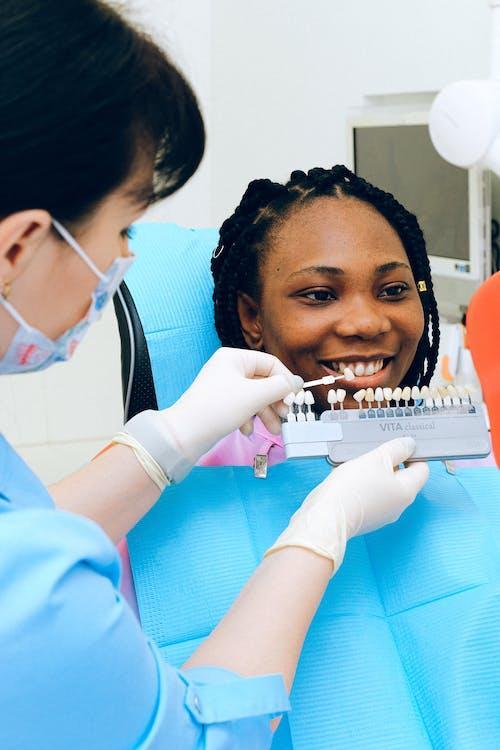
Acquired immunodeficiency syndrome (AIDS) is a chronic, lifethreatening condition caused by the human immunodeficiency virus (HIV), which damages your immune system. By compromising your immune system, HIV restricts your body's ability to fight against organisms that cause disease. XXXX Hospital will offer various support services to help with managing or recovering from the disease or condition. These include but are not limited to nutrition, physiotherapy, rehabilitation, specialized clinics, and some patient support groups. The doctor or nurse will advise patient accordingly.
We have a dedicated Dental OPD that is run under the supervision of highly qualified and trained dentists. For this purpose, the department is equipped with the latest autoclaves and all instruments follow the most stringent sterilization standards procedures before they are put to use each time.
Subspecialties in the department include:
▪ General Dentistry
▪ Operative Dentistry
▪ Periodontics
▪ Orthodontics
The team provides advice, care, and support for teenagers as they maneuver the changes of adolescence and begin to require sexual health support. The following services will also be provided:
• Contraception advice and treatment including emergency contraception ('Morning After Pill')
• Testing and treatment for Sexually Transmitted Infections (STIs)
• Sexual health advice
• Pregnancy testing and advice
• Cervical smear tests
• HPV vaccination to protect against cervical, penile, anal, and throat cancers
• Sexual injuries or assault advice
• Management of erectile dysfunction
• Gynecological health
• Sexuality and gender identity support and more.
Some of the services the Eye Unit provides include:
• Retinal vein occlusion
• Diabetic macular edema
• Age related macular degeneration
• Vitreo-retinal surgery
• Medical retina
• Cataracts
• Glaucoma
• Disc abnormalities
• Diabetic screening Eye Unit
We will be equipped with state-of-the-art diagnostic and treatment facilities for patients with cardiac diseases. Our diagnostic facilities will include a dedicated CardioPulmonary unit offering trusted quality services and our Cath Lab will offer all interventional procedures such as angiography and angioplasty. We will also have a dedicated Cardiac Care Unit, an ICU for cardiac patients who need specialized care while they recover from life-threatening conditions, including heart attacks.
Patients with heart disease often have other comorbidities, which need care from other specialties. XXXX Hospital will offer comprehensive care with all specialties under one roof. This enables our doctors to work closely with doctors from other departments in the hospital and ensure our patients receive holistic treatment on their journey to recovery.
We will have a 24/7 stat laboratory facility to support our admitted and urgent care patients. Urgent tests will be done and reported within 2 hours, to ensure fast and early diagnosis and treatment. Reports for routine and special tests can be collected in person or accessed online with the user id number and password, found on the test receipt.
– MRI and CT
We will offer comprehensive and computerized radiology services (General Radiography, Ultrasound with or without Color Doppler, and Endo Vaginal Scans).
We will also offer computed tomography (CT), magnetic resonance imaging (MRI), nuclear medicine, positron emission tomography (PET), vascular and interventional radiology (VIR), and ultrasound.
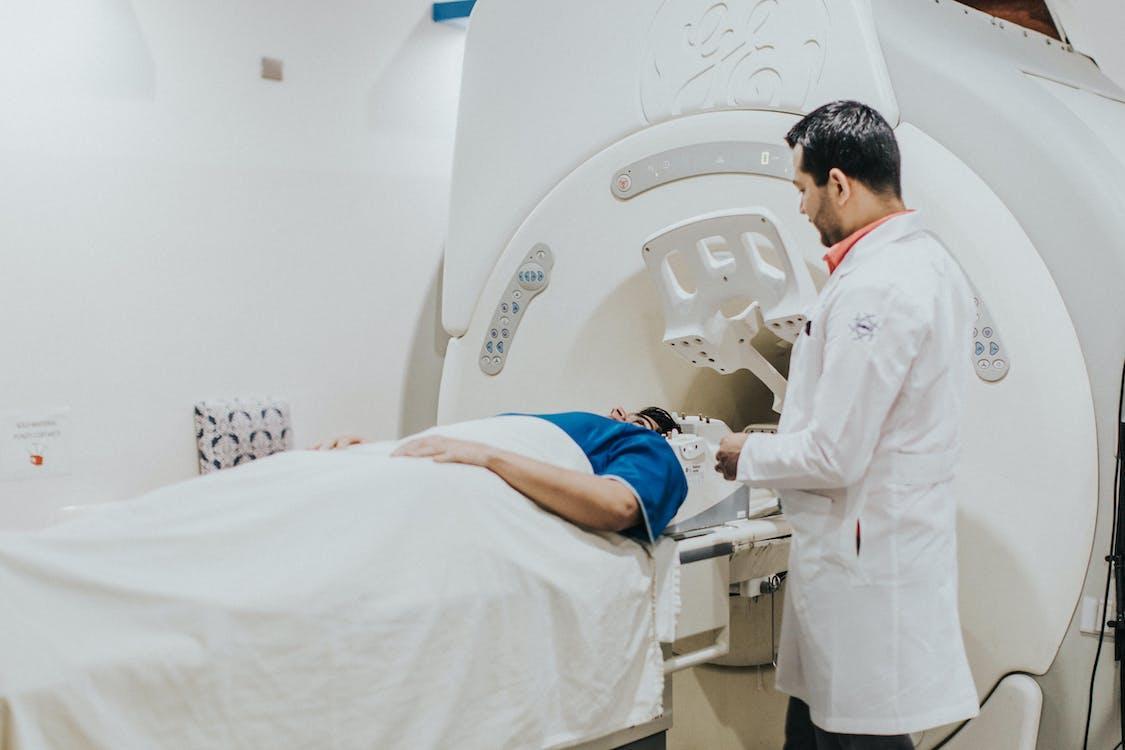

A hospital can be a frightening environment for patients as well as a high-stress work environment for hospital staff. Hospital chaplains help alleviate that fear and stress by providing emotional and spiritual care, also known as pastoral care. According to studies, hospital chaplains not only improve the patient experience, but they also help prevent burnout and other stress factors in staff.
XXXX Hospital will be equipped and staffed to provide care for patients suffering from major traumatic injuries such as falls, motor vehicle collisions, or gunshot wounds. A trauma center may also refer to an emergency department (also known as a "casualty department" or "accident and emergency") without the presence of specialized services to care for victims of major trauma.
XXXX Hospital’s doctors will diagnose and manage acute kidney injuries (AKI), chronic kidney disease (CKD), kidney failure, polycystic kidney disease, renal biopsy, hemodialysis, and peritoneal dialysis. Furthermore, comprehensive services will be available for interventional nephrology procedures (for managing and unblocking fistula such as dialysis catheter insertion, tunneled catheter insertion (permcath)), and peritoneal dialysis catheter insertion.
The Library will be continuously improved not only as a collection of books but also as an instrument for the assistance of study and research. The library will acquire and develop a variety of resources to support the research programs offered at the XXXX Hospital.
Patient meals are tailored by our expert nutritionists who work closely with our internationally trained chefs to design nutritious patient menus that are suitable for meeting individual patient health and dietary needs.
Family and visitors can order tasty food and light meals from the in-room dining service menu, available throughout the day and night.
Family and visitors may choose to eat in the elegant dining area and select from a delicious variety of cuisines, that range from crisp oven-baked pizza to proper meals.
Alternatively, family and visitors can pick up freshly made sandwiches, snacks, and light meal options available from the café 24 hours a day.
- Build Value-Driven relationships with staff.
- Adhere to Health and Safety Standards as per the standards of the government.
- Provide staff with all the necessary equipment for care services.
- Streamline the Financials.
- Increase in the wealth of stakeholders of the company.
- Achieve synergy effect of services provided.
- Build brand awareness.
- Diversification.
- Work together with experienced management to devise growth strategies.
- Direct appropriate marketing strategies to reach potential clients.
- Adopt and align the vision/mission statement with the company’s direction.
- Adopt the best policies and practices of the industry to maintain the quality of services.
- Hire, train, and retain professional and qualified staff to differentiate the services from competitors.
- Continuously monitor market opportunities to specialize in additional services.
- Set realistic revenue and profitability targets for initial years and monitor performance closely using KPIs.
- Implement automation.
- Create open lines of communication.
- Encourage employee collaboration.
- Identify bottlenecks in operational processes.
- Hire the right people and get them trained.
- Focus on patient care.
- Choose the right technology.
- Focusing on services according to patients’ needs.
- Collaborating and partnering with Local Health Departments and community partners to identify and address community needs.
- Optimizing our service offerings to best meet the continually changing needs of the community.
- Ensuring our services are equitable, inclusive, and respectful of everyone in our community.
- Working within the wider health system to best position our hospital as the number one provider.
- Identifying new and different approaches to funding and resourcing to deliver on our strategic directions.
- Working with others to improve the efficiency of our local system through creative partnerships.
- Providing development and educational opportunities for the team.
- Recognizing and leveraging the care and passion of our volunteers.
- Purposefully nurturing and reinforcing our culture.
- Supporting our physicians and their work life.
How XXXX Hospital is different from its competitors


Avenues Clinic was opened in 1983, the hospital is a fully integrated multidisciplinary facility with a total of 176 beds. The hospital offers theatre facilities, all critical care facilities, an Accident and Emergency unit, a Surgical ward, a Medical ward, maternity facilities, and a pediatric unit. The hospital is located near the CBD of the capital city. The hospital lacks current equipment and technologies and the pricing for its services is beyond the reach of many citizens.

Harare Central Hospital is situated in the Harare – Southerton district of Harare on 96 hectares of land. It is the principal referral center for patients from the Northern half of Zimbabwe and occasionally accepts patients from outside the country. In addition, the Hospital is the main services hospital for the residents in Greater Harare and the adjoining areas. The Hospital is modern in design and is equipped to a high standard. The Renal Dialysis Unit is available to patients of all races. Harare is also a center for research and there are only a few places possessing such a wealth of clinical material. XXXX Hospital will be better than the competitors as it will be offering all the facilities that a hospital must have. As The standard of medical and health care in Zimbabwe is too low. XXXX Hospital will be resolving this by providing quality patient care services in Zimbabwe which other competitors are not offering.
Parirenyatwa General Hospital is a government hospital in Harare and is the largest and oldest medical center in Zimbabwe with 5000 beds. The hospital has seen its days and the services are poorly managed. The hospital has suffered a major brain drain and is mostly run by interns. Hospital equipment is way behind the current trends.
❖ A competitive pricing strategy will be used.
❖ Ability to market online.
❖ Innovative product and service concepts.
❖ Highly visible website.
❖ High focus on patient care as the owners have medical backgrounds.
❖ Heavy focus on promotional activities for which the cost may be high.
❖ The high implementation costs, adopting new systems, and the absence of local fast broadband, are some of the main reasons the hospital will be slow in adapting to the latest IT technologies.
❖ End-user resistance: unfamiliarity with the system; training is required which means extra costs, and a threat to their jobs.
❖ Existing competitors.
❖ The use of the Internet in hospitals is carving new ways to communication with patient groups, the general public, physicians, employees, etc., and improving web-based applications. The use of web portals can offer healthcare services and awareness to patients and their carers. The Internet is also redefining the modes of communication for doctors and patients.
❖ The hospital needs to maintain patient trust by utilizing all available means to minimize errors and to make patient healthcare records available at the point of decision. Data availability and accuracy hold significance in the hospital industry, and to maintain a patient’s trust, these need to be functioning appropriately and timely.
❖ One of the significant obstacles and the reason for the slow adoption in the hospital industry are the high implementation and operational costs and system complexity.

XXXX Hospital will be creating its website that is optimized to rank high on search engine results. Once a search optimization strategy begins producing results, those changes tend to be long-term and extremely prosperous for the hospital services. The content will mainly focus to give the visitors complete information about all the facilities and treatments offered at the hospital.
XXXX Hospital will register itself with various Universities & Research Institutions. They will undertake research work in the hospital and will market the hospital indirectly.
Social media may be the go-to platform for today’s businesses, but email marketing continues to drive impressive conversion rates. Automated marketing emails allow patients to retarget. XXXX Hospital will create and share successful treatments for Zimbabwe.
The company will hire a marketing firm to promote its business on various social media platforms such as Facebook, Instagram, and Twitter. The marketing firm will not only create a business page for the company, but it will also create a business ad for promoting the company on the mainstream news feed. This will also help to increase the clientele.
Flyer marketing remains one of the most versatile and cost-effective business strategies out there. Even in the digital marketing age, flyer distribution is still one of the most effective ways to acquire new customers and inform them about XXXX Hospital treatment offerings.





Traditional marketing is a promotional strategy that targets audiences using offline materials. Marketers may use traditional marketing to interact with consumers in physical locations. XXXX Hospital will typically insert these marketing materials in places where their audience is more likely to see, hear or interact with them. These may include promoting the hospital on TV, Radio, or in newspapers.
Print advertisements allow you to reach more prospective customers through outlets like flyers or magazines.XXXX Hospital will build more awareness in the community, and showcasing advertisements in the magazines can help others learn more about the hospital, its location, and its products.
With event marketing, XXXX Hospital can create advertising materials to showcase at industry events, like seminars, conventions, or conferences. Try creating booths and larger materials like signs or banners to attract attendees and teach them about the hospital and its products. Consider setting up similar booths at other local events, like fairs or festivals, to gain local attention as well. XXXX Hospital can also participate in sponsorships to increase its brand recognition and awareness.






➢ Hospital with various medical treatments including specialist facilities of the following:
➢ Dialysis
➢ HIV Hub
➢ Kidney Unity
➢ Eye Unity
➢ Trauma center
➢ Radiology – MRI and CT
➢ Dentistry

➢ Prices of the product and services are highly competitive.
➢ Different types of medical services will be offered and can be provided on request.


Promotion Place
❖ Flyer Distribution
❖ Email Marketing
❖ Engage with Universities & Research Institutions
❖ Social Media
➢ Hospital is registered in the Zimbabwe.

• Name : Dr XXXX
Experience and Responsibilities:
• PHD
• MBA
• BA Business Management and Marketing
• BA Critical Social Psychology
16 years in the Health Care industry with a wide range of responsibilities, including
• Hiring and retaining qualified staff
• Ensuring the best quality of patient care
• Demonstrating leadership
• Creating a positive and productive culture
• Delivering a strong financial performance
• Setting and following standards for operational excellence
• Implementing clinical procedures and policies
• Safeguarding required compliance with state, federal and local regulations and hospital policies
• Developing a relationship with outside organizations, including the medical community, referring physicians and the media
• BA Hons Business and Management
• Level 5 NVQ working with young children in care homes
• Name : XXXX
Experience and Responsibilities:
Overall responsibility for the running of the organization
• Implementation of strategies and developing of new health care projects
• Providing a clear focus for team members and ensuring high standards and systems are maintained
• Accountable for client care, resources management, and staff performance
• Ensuring the promotion and implementation of flexible and family-friendly working in accordance with the organization’s policies
• Ensuring effective use of resources and budgets
• Responsible for delivering the best quality patient care.
• Leadership while creating a positive and productive culture.
• Setting and following standards for operational excellence.
• Hire and retain qualified staff.
• Implement clinical procedure and policy.
• Safeguard required compliance with State and Federal, regulations as well as hospital policies.
• Develop a relationship with outside organizations, including the medical community, referring physicians, and the media.
• Deliver strong financial performance.
• Contribute to the development of the wider health economy strategy and in particular the creation of services, systems, and processes to support admission avoidance and the timely discharge of patients from hospital.
• Establish robust systems of clinical and corporate governance, financial management, risk management, and compliance in the Divisions, ensuring that the hospital continuously learns in response to incidents, by listening to patients and staff and from complaints and claims.
• Ensure Divisions meet their financial objectives and cost improvement targets and contribute effectively to the annual planning program.
• Drive the financial planning of the company by analyzing its performance and risks.
• Retain constant awareness of the company’s financial position and act to prevent problems.
• Set up and oversee the company’s finance IT system.
• Set targets for and supervise all accounting and finance personnel (management accountants, internal auditors, etc.).
• Oversee all audit and internal control operations.
• Develop the corporate fundraising strategy and manage relationships with partners and investors.
• Prepare timely and detailed reports on financial performance on a quarterly and annual basis.
• Conduct analysis to make forecasts and report to senior executives.
• Ensure adherence to financial laws and guidelines.
• Provides Administrative oversight of the daily operations of the hospital.
• Understands and works toward meeting current regulatory standards.
• Anticipates physician needs.
• Addresses problems involving personnel, medical staff, patient, families, and the general public.
• Plans and evaluates job descriptions annually.
• Responsible for ongoing performance evaluation, guidance, and development of personnel.
• Ensures smooth daily operations and steady progress toward established hospital goals.
• Responsible for cost-effective programs.
• Identifies problems and communicates solutions to appropriate personnel.
• Keeps open communication with medical staff.
• Provides opportunities for the growth and development of hospital staff.
• Holds staff meetings to provide the opportunity for participative planning.
• Supervise daily administrative operations.
• Monitor expenses and suggest costeffective alternatives.
• Create quarterly and annual budgets.
• Develop and implement effective policies for all operational procedures.
• Prepare work schedules.
• Maintain organized medical and employee records.
• Monitor administrative staff’s performance.
• Train new employees.
• Ensure prompt ordering and stocking of medical and office supplies.
• Answer queries from doctors, nurses, and healthcare staff.
• Resolve potential issues with patients.
• Stay up-to-date with healthcare regulations.
• Design and implement comprehensive marketing strategies to create awareness of the company’s business activities.
• Supervise the department and provide guidance and feedback to other marketing professionals.
• Produce ideas for promotional events or activities and organize them efficiently.
• Plan and execute campaigns for corporate promotion, launching of new product lines, etc.
• Monitor progress and submit performance reports.
• Responsible for producing valuable content for the company’s online presence, editorial design, and organizing the company’s publications.
• Conduct general market research to keep abreast of trends and competitor’s marketing movements.
• Control budgets and allocate resources among projects.
• Become the organization’s agent towards external parties such as media, stakeholders, and potential clients and build strategic partnerships.
• Inspecting and updating patients' charts.
• Diagnosing common ailments such as colds, flu, and diabetes.
• Administering medication topically, orally, and via intravenous or intramuscular injections.
• Prescribing appropriate medications and lifestyle alterations.
• Collecting fluid and tissue samples and sending these to laboratories for further testing.
• Refer patients to specialists for further testing and treatment, if needed.
• Creating and issuing invoices to private clients.
• Submitting claims on behalf of patients who have health insurance.
• Anticipating and responding to patients' wellness-related questions and concerns.
• Interview patients and document basic medical history.
• Organize and schedule appointments.
• Update and file medical records and insurance reports.
• Arrange hospital admissions and laboratory services.
• Check with patients and type up patients’ charts.
• Assist during medical examinations.
• Produce and distribute correspondence memos, letters, faxes, and forms.
• Handle receivable and payable accounts and keep financial records.
• Prepare and clean treatment rooms and medical instruments.
• Surgeons are responsible for performing surgeries on patients with injuries or illnesses.
• Collect the patient’s medical history.
• Keep the chart and patient information up to date with current test results and treatments.
• Order new tests to be performed by healthcare staff.
• Review test results to identify and diagnose medical conditions.
• Develop treatment plans for patient care.
• Address any of the questions or concerns of the patient or their family.
• Aid patients through the healing process by providing post-surgical care and follow-up.
• Collaborate with a team of other medical professionals.
Laboratory Team
• Receive, label, and analyze samples (blood, toxic, tissue, etc.).
• Design and execute laboratory testing according to standard procedures, make observations, and interpret findings.
• Conduct experiments under defined conditions to verify/reject various types of hypotheses using refined scientific methods.
• Organize and store all chemicals substances, fluids, and compressed gases according to safety instructions.
• Record all data and results in specified forms (paper and electronic) with accuracy and responsibility.
• Maintain equipment and assist in ordering laboratory supplies.
• Ensure that all safety guidelines are strictly followed at all times and maintain a clean and orderly environment.
Administration Team
• Maintains communication among governing boards, medical staff, and department heads.
• Directs or conducts recruitment, hiring, and training of staff. Establishes work schedules and assignments for staff according to workload, space, and equipment availability.
• Monitors the use of diagnostic services, inpatient beds, facilities, and staff to ensure the effective use of resources and assesses the need for additional staff, equipment, and services.
• Inspects facilities and recommends building or equipment modifications to ensure emergency readiness and compliance to access safety and sanitation regulations.
• Consults with medical, business, and community groups to discuss service problems, respond to community needs, enhance public relations, coordinate activities and plans, and promote health programs.
Finance Team Marketing Team
• Preparing financial reports to help management make strategic decisions by using accounting principles such as double-entry bookkeeping and accrual accounting.
• Reviewing the hospital’s financial records to ensure compliance with laws and regulations.
• Preparing journal entries to record transactions in the general ledger
• Assisting with audits of the hospital’s financial statements to ensure compliance with federal regulations.
• Reconcile accounts payable and accounts receivable to ensure that all incoming and outgoing funds are properly accounted for.
• Calculating payroll taxes and filing payroll tax forms with state and federal agencies.
• Review monthly invoices from vendors to ensure that they have been sent and received.
• Preparing financial reports such as income statements and balance sheets
• Contribute to the implementation of marketing strategies.
• Support the marketing manager in overseeing the department’s operations.
• Organize and attend marketing activities or events to raise brand awareness.
• Plan advertising and promotional campaigns for products or services on a variety of media (social, print, etc.).
• Liaise with stakeholders and vendors to promote the success of activities and enhance the company’s presence.
• See all ventures through to completion and evaluate their success using various metrics.
• Prepare content for the publication of marketing material and oversee distribution.
• Conduct market research to identify opportunities for promotion and growth.
• Collaborate with managers in preparing budgets and monitoring expenses.


Machinery Medical Equipment
Stationary License and Other Certification
Structure Cost Software
Furniture and Fixtures Computer Equipment's
Rent and Security Deposit Marketing
Working Capital


